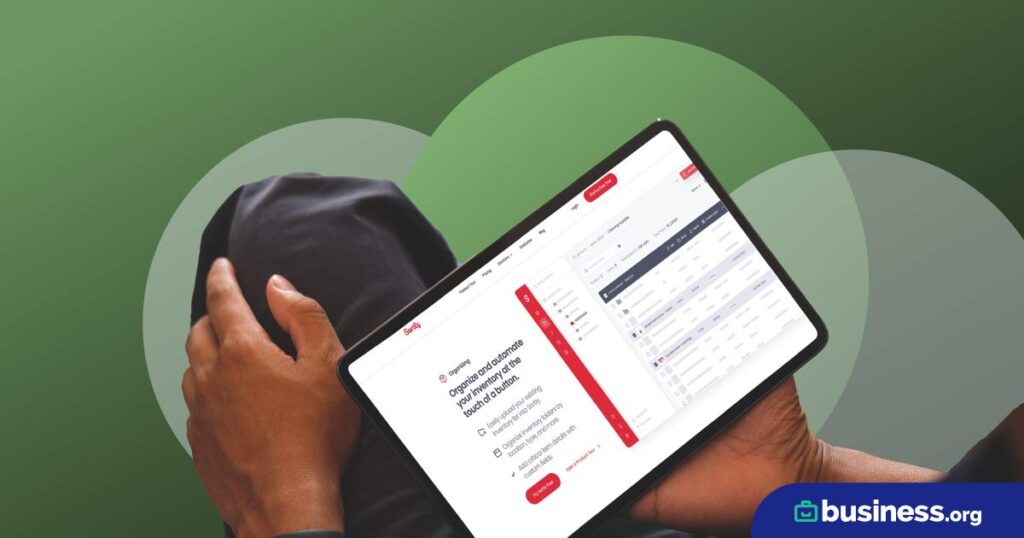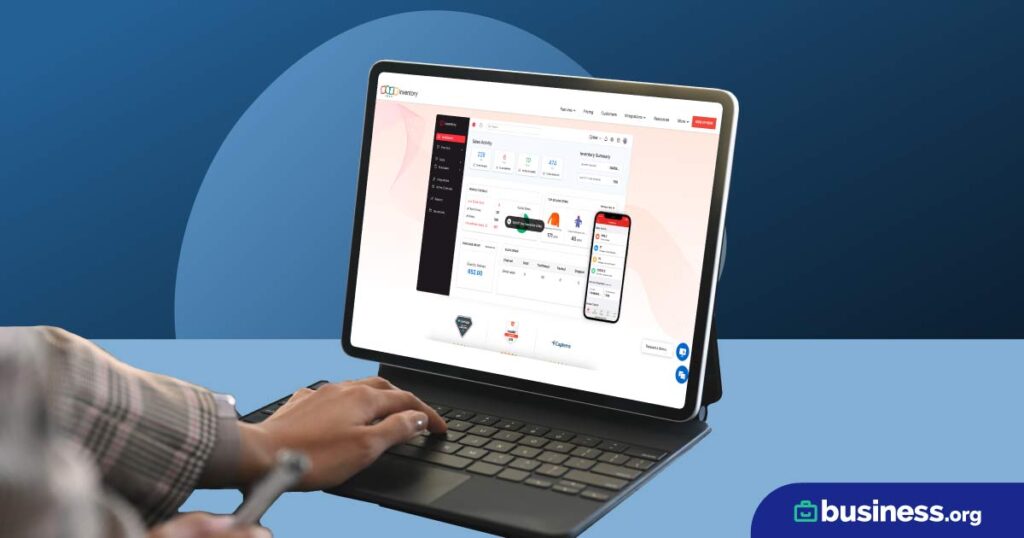We are committed to sharing unbiased reviews. Some of the links on our site are from our partners who compensate us. Read our editorial guidelines and advertising disclosure.
How to Start a Dropshipping Business in 2025
New ecommerce stores can get up and running quickly and cheaply by using a dropshipping business model. Here are the seven steps you need to follow to get started.
If you’re looking to start a business, setting up a dropshipping store is a great way to get started. It requires minimal startup capital, and it doesn’t come with the risks associated with buying and storing inventory that you may not be able to sell.
That being said, dropshippers are only successful if they put considerable work into their business—particularly in the vital beginning stages. Skip background research on your products or supplier, for instance, and your business may never be able to turn a profit.
So before you rush out to set up your ecommerce store, read on to check out our complete guide to starting a dropshipping business.
1. Pick a product niche
The first thing you have to do is figure out your dropshipping business idea. The products you decide to sell can make or break your business, so it’s important to find a product (or a few products) that meet the following qualifications:
- Interesting. Choose a product you find interesting or it may be hard to sell.
- Searchable. Use Google Trends and other tools to find trending products that people actually want to buy.
- Focused. Don’t try to be everything to everyone. Find a specific customer base you can customize your marketing for.
- Profitable. Remember that it takes a dropshipper the same amount of work to market a $50 product as it does to market a $5 product. Choose a profitable niche that will maximize your payout.
- Cheap to ship. Potential customers get thrown by high shipping costs. Find a supplier with low shipping rates or choose smaller lightweight items that don’t cost so much to ship.
- Hard to find. Focus on products that aren’t available locally. Make sure your customers have to turn to online stores to find what you’re selling.
- Evergreen. Choose products that are available and in demand year-round—seasonal items mean inconsistent cash flow.
- Brandable. Try to choose products that can be easily branded with your business name, logo, or unique flair (you may have to find a supplier that allows you to brand their products).
2. Research the competition
A lot of new dropshippers make the mistake of choosing niche markets with no competition, thinking that if no one else is selling the product they’re offering, they’ll be able to stand out and win sales more easily.
The problem? If there’s no competition in your niche, it’s probably because customers have no interest in the product. Successful dropshipping businesses choose a niche where there’s already some competition, then they figure out how to make their winning product better or more marketable.
That means researching what other businesses in your industry are doing. How are they marketing their goods? What’s working well that you can use too? What can you improve on? This research will shape your customer acquisition strategy and help you stand out from your competitors.
You should also spend time reading customer reviews for both your competitors and their products. Your competitors’ customers are also your potential customers, so reviews can give you great insight into what your customers like and don’t like. This data may have a direct impact on what supplier you choose (since your supplier controls both the quality of the product and customer interfacing via order fulfillment).
By signing up I agree to the Terms of Use and Privacy Policy.
3. License your business
While not all solopreneurs need a business license, dropshippers definitely do—especially if your dropshipping niche requires you to partner with an overseas supplier. Check out our guide to registering your business to learn more about what to do.
4. Find a supplier
Finding a supplier is extremely important for successful dropshippers. And fortunately, it’s also fairly easy. Lots of resources exist to help match business owners with suppliers, like Alibaba.com or AliExpress.com.
The trouble is choosing a dropshipping supplier that actually meets your needs. If you choose a lackluster supplier, you may wind up stuck selling shoddy products, resolving issues with delayed shipping times or missed orders, or even dealing with law enforcement officials.
To avoid these pitfalls and find the right supplier, be sure to ask these questions up front:
- What’s their return policy?
- Do they offer insurance?
- Do they offer fraud protection?
These preliminary questions will help you get a better idea of whether a supplier is on the level. But to ensure an effective partnership, we recommend also looking into a few other things:
- Communication barriers. Try to discover any language barriers and ensure you and your supplier can communicate effectively.
- Production capabilities. Can your supplier keep up with your sales projections? Can they scale up with you as your business grows?
- Order fees. Check to see if your supplier charges a fee every time you submit an order. If that fee is too high, it may cut into your profit margin too much. Deal-breaker.
- Turnaround times. Test your prospective supplier’s speed to ensure the promised delivery time matches your experience.
- Product quality. Read customer reviews and test your supplier’s product quality to ensure it passes muster.
- Product photos. Because you don’t own the products you’ll sell, it’s better to rely on your supplier’s product photos to avoid legal trouble and a lot of extra work. But make sure your supplier’s photos are high-quality, showcase the product to its best advantage, and match the style of product photos used by your competitors.
- Support. Does your supplier offer fast, helpful support when you have a question or a problem? Make sure they’ll be responsive when a customer contacts you with a product question you can’t answer off hand.
If you’re still unsure whether your prospective supplier is right for you, it never hurts to ask for referrals. If the supplier is legitimate and reliable, they should have no trouble providing glowing testimonials.
5. Set up your store
Now it’s time to set up your actual ecommerce store. You have a couple ways to get started.
Build your own ecommerce store
One option is to build your own ecommerce website on a website building platform. Having your own Squarespace, Wix, or Shopify dropshipping store gives you maximum control over your brand. And depending on your platform, you may be able to integrate your website with other sales channels (like social media marketplaces).
While pretty much any website builder will do, ecommerce-focused platforms like Shopify or BigCommerce may offer extra advantages. With the Shopify app, for example, you can manage orders, chat with customers, and process payments on the go from your smartphone.
If you’re leaning toward building your own ecommerce site, we recommend checking out our guide to the best ecommerce website builders to get all the details on the benefits offered by each platform.
Best ecommerce website builders comparison
Data as of 11/28/22. Offers and availability may vary by location and are subject to change.* With annual plan
Find an online marketplace
While building your own ecommerce site gives you lots of control, it also means more work. Plus, it can be expensive, depending on the platform you choose.
Another cheaper option is to use an ecommerce marketplace like Amazon, eBay, or Etsy. Setting up your store on a trusted marketplace automatically lends your business more credibility, which may make you seem more trustworthy to potential customers. It also gets you at least a little bit of guaranteed traffic to your store right off the bat, and it’s usually more affordable to start up.
The downside? Some marketplaces charge you fees for every sale you make. You also have less control over your online branding and customer service. On densely populated marketplaces like Amazon, you may also have more competition since your products will be listed side by side with your competitors’ products.
6. Create a customer acquisition plan
Once you’ve got your website up and running, it’s time to consider how you’ll market your ecommerce business. The goal is to get users to your site, convert them to paying customers, and build loyalty toward your brand so they come back later to buy more.
When building your acquisition plan, you’ll want to consider how (and if) you’ll use the following marketing strategies:
- Content marketing: The way you use blog posts, tutorials, guest posts on other sites, and even product copy to reinforce your brand and win new customers
- Search engine optimization: Using relevant keywords on your site to help your store show up in search results
- Social media marketing: How you interact with customers in a social space, including how you resolve public complaints and advertise your business
- Google ads: Ads that appear in Google search results and in Google ad banners on other sites
- Video marketing: Using YouTube, Vimeo, TikTok, and other video platforms to produce relevant content that’s useful for your users and promotes your brand
- Email marketing: The emails you send to loyal customers and subscribers, which can introduce new products, announce sales, and provide insider deals
- Influencer partnerships: Teaming up with influential businesses or people within your niche to promote your product
The right marketing strategy will depend on your product niche, your understanding of your ecommerce users, and the marketing techniques being used by your competitors. Be sure to rely on the information you gleaned during your product and competition research.
7. Analyze and optimize
You’ve got your supplier lined up, your online store in place, and your marketing strategy set. Time to sit back and watch the cash flow in, right? Wrong.
When you start a dropshipping company, you do a lot of research to understand your customers and your business. But you also have to make some assumptions along the way about what will work best for your business structure. And chances are not all of those assumptions will be right.
Successful dropshipping companies constantly evaluate what’s working well and what can be improved. They track customer conversions (the process by which a customer actually goes through with a sale) to understand how real people interact with their site. Then they work to replicate those successes.
If your customer tracking indicates that most of your sales come from people who found your site on social media, for example, you may decide to ramp up your social media marketing with more Facebook ads, Instagram posts, and Twitter interactions. Or if you find that 90% of your email recipients return to make a second purchase, you may decide to focus on increasing your email subscriber count.
Figuring out what’s working and optimizing your business for success will ensure your dropshipping company stays profitable long-term, and it’ll help you grow your business over time.
The takeaway
Dropshipping isn’t for everyone. But if you’re serious about starting a dropshipping business, we hope these tips will get you well on your way to starting a profitable ecommerce business.
Running a successful dropshipping business is all about choosing the right tools. For help building your website, check out our guide to the best e-commerce website builders. And for help managing your inventory, check out our review for our favorite dropshipping inventory software—Ordoro.
Related reading
Dropshipping FAQ
Dropshipping is absolutely legal. However, you can land yourself in hot water if you partner with a dropship supplier who’s illegally selling someone else’s product. Even if you didn’t know your supplier wasn’t on the level, you’re still considered legally complicit in a crime if you market and sell their ill-gotten merchandise. That’s why it’s so important to ensure you have a reliable supplier early on.
A dropshipping business model can work for many types of businesses—the only thing you must have is an online store.
Brick-and-mortar businesses can partner with their suppliers to offer dropshipping on online sales—even on items they also sell in their retail store. Ecommerce stores can add select dropshipped products to their online offerings, allowing online business owners to offer more products without taking on additional risk. Or you can set up an online dropshipping store that uses dropshipping as its exclusive fulfillment method. The choice is yours.
Dropshipping businesses are notoriously cheap to start, but the actual startup costs vary. If you opt to use a dropshipping marketplace (like Amazon or Etsy), your startup costs may be lower than if you set up your store on an ecommerce platform like Shopify or Weebly. Your startup costs can also fluctuate based on the amount of money you want to spend advertising your ecommerce business at the start.
In general, though, startup costs for dropshipping businesses tend to range anywhere from $0 to over $1,000.
Disclaimer
At Business.org, our research is meant to offer general product and service recommendations. We don't guarantee that our suggestions will work best for each individual or business, so consider your unique needs when choosing products and services.







